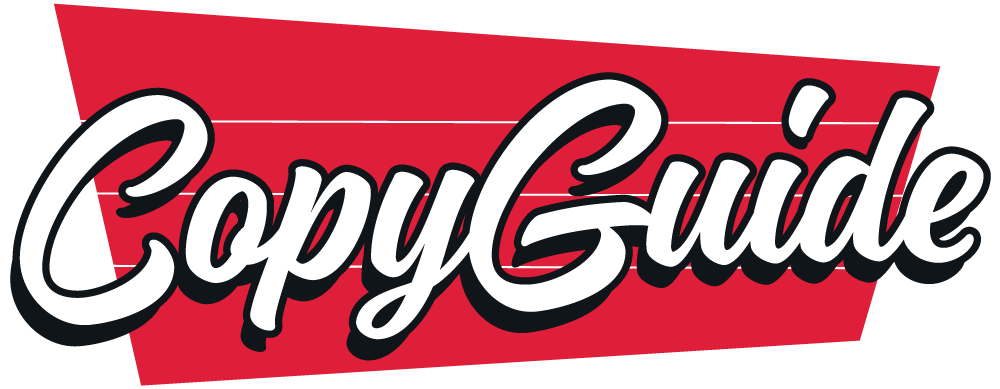(this article was originally published on the Crazy Egg blog in 2017)
There’s a scene in Seinfeld where Kramer dabbles in copywriting.
Do you remember it?
Jerry’s trying to sell a used van he was guilted into buying from “Fragile Frankie.” So Kramer, being the thoughtful guy he is, offrers to write the classified ad for him.
KRAMER: “Here we go, yeah. ‘For sale: a big, juicy, van.’ And oh: better put down: ‘Interesting trades considered.’”
JERRY: “I don’t want any trades!”
KRAMER: “It’s all about tickling their buying bone.”
At the very least, Kramer’s ad is memorable.
In fact, his headline is still being “swiped” by van-sellers on craigslist even after the iconic comedy ended more than 17 years ago. I found this ad just last October:
The juicy-van scene is among hundreds of deliciously memorable Seinfeld moments that people are still blogging about.
And surprise, surprise: Kramer is the character that’s mentioned the most.
There’s just something about the original “hipster doofus” that makes him impossible to ignore.
He’s authentic.
He’s intriguing.
And he’s never, ever boring.
So if your landing page or website reads like a Jeopardy re-run, try making it a whole lot stickier by trying out these 5 Kramer-esque copywriting tactics.
1) Snatch attention with unexpected words

The word “juicy” is what makes Kramer’s van ad so memorable — you don’t expect a van to be described that way, so the copy makes you stop and think. It surprises your brain by breaking the pattern of language we’ve all become accustomed to seeing when scanning car ads.
(But on a side note, adjectives that are specific and relevant to the product are often more persuasive.)
One study showed that the pleasure centers in our minds are “more turned on” when we experience unpredictable pleasant things, compared to expected pleasant events.
Chip and Dan Heath also touched on this in their marketing classic Made To Stick: Why Some Ideas Survive and Others Die, listing surprise as one of the six principles that all “sticky” or memorable ideas share.
But it’s important to consider the context in which your unexpected words are being used.
Consider this page from the folks at Foot Cardigan. They wrote absurdly entertaining copy for a product that’s generally considered to be a boring, utilitarian piece of clothing: men’s socks.
And despite their linguistic shenanigans, Foot Cardigan’s message is still simple and easy to absorb. That’s important. If what you’re saying isn’t 100% clear, your conversion rate will tank.
You can also surprise readers by making up a new adjective (once again, clarity is key here) or by using a word or phrase that looks unusual. Hipchat does both on this landing page:
2) Suck readers in with sensory language
There’s a scene in Seinfeld where Jerry asks Kramer what a kidney stone is.
KRAMER: “It’s a stony mineral concretion, formed abnormally in the kidney. And this jagged shard of calcium pushes its way through the urethra into the bladder. It’s forced out through the urine!”
JERRY: “Oh, that’s gotta hurt.”
I cringed a little just reading that description.
Why? Because Kramer uses sensory language to make his words more powerful.
When people read vivid copy that engages their senses, it activates more brain cells by causing them to think more deeply about the topic.
As direct response pro Drew Eric Whitman puts it in his book Ca$hvertising, sensory-rich text takes fuzzy images and sharpens them to crystal clarity.
In the example above, Kramer uses emotion-rich adjectives and nouns, like jagged shard, and then combines those with muscular verbs, like pushes and forced. Those words bring the paragraph to life.
It wouldn’t have been nearly as powerful if Kramer had said: This piece of calcium makes its way through the urethra into the bladder. It’s excreted through the urine!
Sensory adjectives are often used by marketers in the food industry to get potential customers salivating. But they also work well for agitating the pain your customers are experiencing.
For example, Trello uses sensory adjectives like “clunky” and “no-longer-so-sticky” in the subhead on this page to describe the problem it solves.
3) Insert a soundbite to stick in their heads

Kramer’s a persuasive guy. Especially when it comes to candy.
In the 1993 Seinfeld episode “The Junior Mint”, he uses a smart messaging tactic to argue for his favorite confectionary.
JERRY: “Why did you force that mint on me, I told you I didn’t want the mint!”
KRAMER: “Well, I didn’t believe you.”
JERRY: “Why didn’t you believe me?”
KRAMER: “Who’s gonna turn down a Junior Mint? It’s chocolate, it’s peppermint -it’s delicious!”
JERRY: “That’s true.”
KRAMER: “It’s very refreshing!”
Notice what Cosmo did there?
He used a memorable soundbite to drive home his message.
It’s chocolate, it’s peppermint — it’s delicious!
Soundbites are concise, easy-to-remember bits of copy that communicate an idea. This tactic is especially well-known in politics, where quotes like “Mr. Gorbachev, tear down this wall!” are remembered for decades.
One speechwriter for former UK Prime Minister Tony Blair defines a soundbite like this:
“All we mean, really, is a pithy way of capturing the essence of the point. To be or not to be – that really was the question. It was a soundbite too.”
But they work just as well when writing copy for products and services.
Kramer’s Junior Mint quote is a great example of a “rule of three” soundbite. As Derek Halpern of Social Triggers explains: “The first item creates tension, the second builds it up and the third releases it.”
Here’s how Invision uses a rule of three soundbite in the subhead of this landing page:
The phrases “Unlimited team members” and “Unlimited projects” build up to the final climactic point: “Unlimited creativity.”
Apple regularly uses sticky soundbites as headlines on its web pages. Here’s an example of one that leverages the power of contrast.
Much like the element of surprise, contrast works by defying our expectations and forcing us to pay attention.
4) Simplify your message with similes
The show Seinfeld is stuffed with fun similes.
Copywriter Scott McKelvey even compiled this fantastic list of 70 Seinfeldian metaphors. But for me, the ones from Kramer stand out the most.
Remember the episode with the Mackinaw peaches?
KRAMER: “Makes your taste buds come alive. It’s like having a circus in your mouth. Take a taste.”
JERRY: “I am not gonna taste your peach. I ate someone’s pecan last night, I’m not gonna eat your peach.”
KRAMER: “Jerry, this is a miracle of nature that exists for a brief period. It’s like the Aurora Borealis.”
Similes serve as mental shortcuts on your landing pages.
By comparing two different things to create a new meaning, you can simplify complex concepts into something the reader instantly understands or relates to.
When done well, they create an immediate picture in the prospect’s mind.
Kramer illustrated the “miracle” qualities of Mackinaw peaches by comparing them to the Aurora Borealis — something that’s generally understood to be rare.
But similes are especially powerful when you use them to explain complex concepts. As Brian Clark details in this classic Copyblogger article, metaphors (including similes) work best when they “catch attention via the emotive right brain, and close the deal via the logical left brain.”
Crazy Egg offers a great example of a simile in action on its homepage:
Unless you’re an experienced internet marketer, you may not understand exactly how heat mapping software works or the value it provides. Crazy Egg gives readers an instant explanation by comparing their product to a pair of x-ray glasses.
Here’s another one: copywriter Amy Harrison uses a great simile on this landing page to communicate the value of her online training program in mere seconds.
Similes and other metaphors are especially powerful when they’re relatable on a deep, emotional level. Consider this print ad for the Children’s Defense Fund.
You may not understand what it’s like to be a teenaged mother, but you do know what it’s like to be grounded. By comparing these two things, this ad builds instant empathy with readers.
5) Be authentic. Be different. Be yourself.

Kramer was never like the rest of the Seinfeld gang.
British newspaper The Independent summed it up like this:
Where they were cynical, he was endlessly optimistic. While the other characters were neurotic to the core, Kramer was at ease with his lot. Where the others were endlessly plotting their smallest move in the Manhattan jungle, Kramer was getting recklessly involved in madcap schemes. Kramer didn’t give a fig. He was an artist.
And Kramer communicated that with every word he spoke.
Always upbeat.
Often abstract.
Rarely critical or hurtful.
And that authenticity made him the most lovable character in a TV show that often revolved around taking pot-shots at others.
You can create that some kind of love by letting some of your brand’s authentic personality shine through on your landing page.
A 2014 study by Cohn & Wolf found that 63% of global consumers would buy from a company they consider to be authentic instead of a competitor.
But you can’t fake this. True authenticity builds trust and credibility by being transparent and honest.
It means cutting out all the corporate bullshit and showing vulnerability.
It means letting your brand’s personality shine through — right on the page (even if that includes dropping the occasional F-bomb).
How do you do it? Using an authentic written tone of voice is one of the most powerful ways to get into people’s hearts and boost conversions.
You can find great how-to articles on developing a “voice” here and here. But first, have a look at these examples:
Bushra Azhar, of the Persuasion Revolution, oozes authenticity in her copy. Check out the hero section of this landing page:
With phrases like “Make Words Your Bitch,” she stands out with a no-BS tone of voice that uses a certain level of humor. It also feels honest and matches her personality.
Now, let’s take a look at how a SaaS company uses authentic personality in its copy.
HipChat publicly states their Open Company, No Bullshit policy in their copywriting guidelines. That mindset comes across in their messaging too. This subhead is one example:
Ah, the secret office lolcats.
Hipchat’s aversion to marketing-speak makes the company more relatable, likeable and trustworthy. All key elements for conversions.
Adding a touch of Kramer to your copy
The key to writing high-converting copy is to first understand your prospects and the messages that will resonate with them. That comes long before using any Kramer-esque tactics.
But after nailing down what you need to say, pay close attention to how you’re going to say it.
You’ve got to make sure that once readers hit your landing page or website, their eyeballs will keep moving over every word.
So if you think your page might be adding to all the white-noise marketing BS out there, try looking to the original hipster doofus for a little copywriting inspiration.
Giddy Up.

